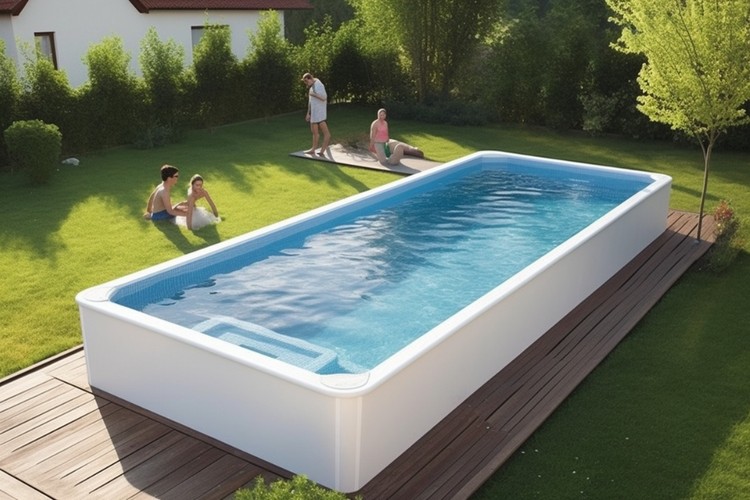Ultimate Home Pool Installation and Maintenance Guide
Turn your backyard into a private retreat with a thoughtfully planned swimming pool. This detailed guide walks you through pool installation, from design choices and construction timelines to ongoing pool maintenance and safety requirements. Learn practical tips on costs, upkeep routines, and legal responsibilities to help you decide and maintain a safe, beautiful pool.

A backyard pool can add leisure, curb appeal, and a focal point for family time. Whether you are planning to install a new pool or keep an existing one in top condition, knowing what to expect during design, construction, and routine care will help you avoid common pitfalls and enjoy your investment for years.
Essential Pool Design Considerations
Design begins with the site itself: available space, sun exposure, privacy, and local zoning or setback rules all shape what is possible. Select a size and shape that balances aesthetics, utility, and maintenance burden. Rounded or freeform pools often blend with landscaping, while rectangular models suit lap swimming and formal designs.
Think through depth variations and user needs. A shallow lounging shelf or beach entry is great for children and relaxing, while deeper zones accommodate diving or more vigorous swimming. Plan safe, convenient access with steps, benches, or ladders. If you want extras like a diving board, spa, or integrated seating, factor those into the layout early.
Surface choices for decks and surrounding areas should resist slips and weathering; concrete, pavers, and composite decking are common options depending on climate and style. Good lighting extends usable hours and improves safety; include ambient lighting for atmosphere and targeted illumination for steps, entries, and mechanical areas.
Swimming Pool Installation Process
A professionally installed pool usually takes about 8 to 12 weeks, though timelines vary with complexity, permits, and weather. The sequence typically follows these stages:
- Site preparation and excavation: clearing the area, marking utilities, and digging the pool cavity.
- Structural installation: building the shell, whether gunite/concrete, fiberglass, or above-ground frames.
- Plumbing and electrical: installing circulation lines, drains, filters, heaters, pumps, and lighting with proper conduit and access.
- Interior finish: applying plaster, tile, or gelcoat finishes depending on pool type.
- Deck construction and landscaping: pouring concrete or laying pavers, adding coping, and integrating landscape elements.
- Safety and final touches: fencing, gates, covers, and any alarm systems required by local codes.
Choosing licensed, insured contractors helps ensure the job follows building codes and industry standards. Request references, view past projects, and verify permits to reduce surprises during construction.
Pool Maintenance Requirements
Consistent maintenance keeps water healthy and equipment working efficiently. Break tasks into daily, weekly, and seasonal duties.
Daily tasks: check water level, skim leaves and floating debris, and inspect for obvious leaks or damage.
Weekly tasks: test and balance water chemistry (pH, alkalinity, sanitizer level), clean or backwash filters as needed, brush walls and steps to prevent algae, and vacuum the pool if debris settles.
Monthly or seasonal tasks: inspect pumps, heaters, and automation systems for wear; lubricate O-rings and check seals; deep-clean filters, and winterize or open the pool depending on climate. When closing for colder months, lower water to the recommended level, add winter chemicals, and protect equipment from freezing.
If routine upkeep is not feasible, many homeowners hire professional service providers for weekly care, seasonal openings and closings, and equipment inspections. A service plan can extend equipment life and maintain consistent water quality.
Cost Considerations for Pool Ownership
Costs vary widely based on pool type, size, site conditions, and chosen finishes. Below is a general range to help with initial budgeting. Always seek multiple quotes and verify what each estimate includes.
| Pool Type | Average Installation Cost | Annual Maintenance Cost |
|---|---|---|
| Inground Concrete | $50,000 - $100,000 | $2,500 - $5,000 |
| Inground Fiberglass | $45,000 - $85,000 | $2,000 - $4,000 |
| Above-Ground | $1,500 - $15,000 | $1,000 - $2,000 |
Prices, rates, or cost estimates mentioned in this article are based on the latest available information but may change over time. Independent research is advised before making financial decisions.
Safety and Legal Requirements
Owning a pool carries legal and safety obligations. Many areas mandate physical barriers such as locked fences with self-closing gates, secure covers, and audible alarms to prevent accidental access. Additional safety measures include clearly marked depths, non-slip decking, adequate circulation to reduce pathogen risk, and readily accessible rescue equipment like life rings and shepherds hooks.
Check local building and health department regulations before construction and comply with electrical and barrier requirements. Insurance providers may also require specific safeguards to maintain coverage and lower liability exposure.
A swimming pool can transform your property and lifestyle, but success depends on thoughtful planning and ongoing care. Start with a realistic budget, choose experienced contractors, and establish a maintenance routine or service plan that fits your time and comfort level. With attention to design, construction quality, and safety, your pool will be a rewarding centerpiece for recreation and relaxation for years to come.






